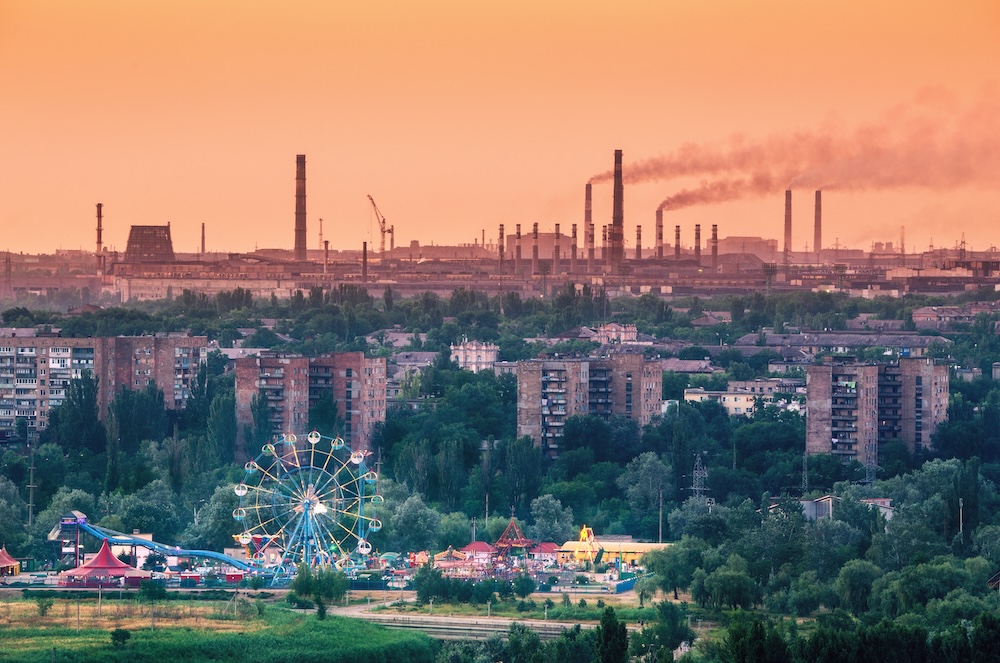What Is Pollution?
Pollution is the introduction of harmful substances or energy into the environment that disrupts the natural balance of ecosystems, harms living organisms, and degrades the quality of air, water, or land. These contaminants—often caused by human activity—can take many forms, from toxic chemicals and plastic waste to noise, light, and thermal disruptions.
The Different Types of Pollution
Pollution isn’t just a single concept. It spans a wide range of categories, each with unique causes, effects, and solutions.
Air Pollution
Air pollution consists of gases, particulates, and biological molecules that contaminate the atmosphere. Common sources include vehicle emissions, industrial fumes, and wildfires. Long-term exposure can lead to respiratory diseases, heart problems, and even cognitive decline.
Water Pollution
Water pollution occurs when harmful substances—such as oil, heavy metals, pesticides, or sewage—enter bodies of water. This pollution threatens aquatic ecosystems and contaminates drinking water supplies.
Land Pollution
Land pollution includes the accumulation of solid waste, illegal dumping, and soil contamination from chemicals and pesticides. It disrupts soil health and biodiversity and can leach into groundwater.
Noise Pollution
Unwanted or excessive sound—such as traffic, industrial noise, or loud entertainment—can disrupt both human and animal life. Prolonged exposure may lead to stress, hearing loss, and sleep disruption.
Light Pollution
Excessive or misdirected artificial light brightens the night sky and disturbs natural patterns in wildlife and human circadian rhythms. It also obscures our view of stars and the cosmos.
Plastic Pollution
Plastic pollution includes the widespread presence of plastic materials in our oceans, soil, and air. Most plastics do not decompose and can persist for hundreds of years, leaching chemicals and harming wildlife through ingestion or entanglement.
Thermal Pollution
Thermal pollution occurs when industries or energy plants release heat into natural water bodies, raising temperatures and affecting aquatic life that rely on specific thermal ranges.
Point Source vs Non-Point Source Pollution
Point source pollution comes from a single, identifiable source like a pipe or a factory. Non-point source pollution is more diffuse, like fertilizer runoff from fields or motor oil washed into storm drains.
Causes of Pollution
- Industrial processes releasing emissions or wastewater
- Transportation emitting CO₂ and particulates
- Agriculture using pesticides and fertilizers
- Deforestation leading to erosion and reduced air filtering
- Household waste that ends up in landfills or water bodies
- Construction and mining that disturb natural environments
The Global Impact of Pollution
Pollution is one of the biggest environmental threats to human and planetary health. According to the World Health Organization (WHO), air pollution alone causes 7 million premature deaths each year. Pollution affects biodiversity, contributes to climate change, and increases the risk of natural disasters like floods and droughts.
Pollution and Climate Change
Many forms of pollution—especially air and land pollution—contribute to climate change. Greenhouse gases trap heat in the atmosphere, leading to rising global temperatures, melting ice caps, and stronger storms.
How Pollution Affects Human Health
Exposure to pollution can have both immediate and long-term health effects:
- Respiratory problems like asthma or chronic bronchitis
- Neurological disorders due to heavy metal exposure
- Cancer risk from carcinogenic pollutants
- Reproductive issues tied to endocrine-disrupting chemicals
- Mental health decline due to noise and environmental stress
Vulnerable Populations
Pollution doesn’t affect everyone equally. Low-income communities and developing nations often face the worst pollution without access to clean air, water, or health care. Children, the elderly, and immunocompromised individuals are particularly at risk.
How to Reduce Pollution
For Individuals:
- Use public transport, bike, or carpool
- Choose reusable items over single-use plastics
- Avoid products with harsh chemicals
- Support clean energy solutions
- Recycle properly and compost organic waste
For Communities:
- Advocate for green spaces and tree planting
- Promote local sustainability programs
- Support clean-up events and recycling drives
For Policymakers:
- Regulate industrial emissions and waste
- Create incentives for clean energy and conservation
- Fund public transportation and pollution control technologies
Common Questions About Pollution
What are the biggest sources of pollution?
Fossil fuel combustion, industrial waste, and agricultural runoff are among the largest contributors.
Is pollution reversible?
Some pollution can be mitigated with cleanup efforts and policy change, but others—like microplastics—persist for decades or centuries.
What are the economic effects of pollution?
Pollution leads to increased health care costs, reduced agricultural productivity, and environmental cleanup expenses, impacting global economies.
Can pollution cause global warming?
Yes, especially air pollution that releases greenhouse gases like CO₂ and methane into the atmosphere.
How can I measure my pollution footprint?
Online calculators can estimate your carbon footprint, waste generation, and energy use based on your habits.
Final Thoughts
Pollution is not just an environmental issue—it’s a social, economic, and health crisis with far-reaching consequences. But it’s also one we can solve. From local choices to global policies, every action matters. Understanding pollution is the first step toward a cleaner, healthier, and more sustainable future.









Reader Interactions